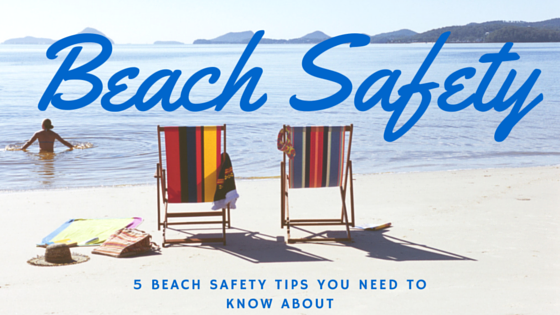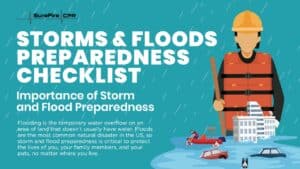
Summer is right around the corner, which makes now a great time to prepare for beach season.
Taking a trip to the beach often requires you to pack sunscreen, beach towels, swimsuits and other beach day essentials. However, beach safety also remains paramount and should never be taken for granted.
So what can you do to enjoy a safe, exciting experience at the beach? Here are five beach safety tips you need to know about:
-
Understand how to swim.
When was the last time you took a dip in the ocean? If it’s been several years, it may be valuable to take a refresher course to bolster your swimming skills.
Also, young children or inexperienced swimmers should wear U.S. Coast Guard-approved life jackets in and the around water at all times. It always is better to err on the side of caution, and with a life jacket, these swimmers will be able to splash, play and, of course, swim safely during their trip to the beach.
You should never swim alone at the beach, either. By swimming with a friend or family member, you can enjoy a fun-filled experience without putting your life at risk.
-
Dive safely.
Diving headfirst into water poses a significant risk. Conversely, you should take the plunge feet first to protect your neck.
Plus, it is important to know exactly where you’re diving, and you’ll want to check the water depth before doing so. You should ensure the diving area is clear of any obstructions as well.
-
Be on the lookout for rip currents.
Rip currents are dangerous and can form in both large open water areas and low spots and breaks in sandbars. As such, you’ll want to guarantee there are no rip currents before you go for a swim.
In the event that you are caught in a rip current, try not to panic. Instead, you should remain calm, cool and collected and swim parallel to the shore. And after you are out of the current, turn and swim back to shore immediately.
Also, be prepared to help others who may be caught in rip currents. If someone is caught in a rip current, ask the lifeguard for assistance. And if the lifeguard is unavailable, don’t hesitate to call 911, too.
-
Check the weather report.
Is there lightning in the weather forecast? If so, you may want to reschedule your beach trip for another day; that way, you can avoid the potentially life-threatening combination of lightning and water.
When it comes to lightning and thunder, National Geographic News recommends the “30-30 rule” for beachgoers. Following this rule ensures you can protect yourself against lightning and thunder at all times.
“When you see lightning, count the time until you hear thunder. If that time is 30 seconds or less, the thunderstorm is within six miles (10 kilometers) of you and is dangerous. Seek shelter immediately,” National Geographic News notes. “The threat of lightning continues for a much longer period than most people realize. Wait at least 30 minutes after the last clap of thunder before leaving shelter. Don’t be fooled by sunshine or blue sky!”
It never hurts to check the weather forecast before you depart for your beach excursion. This enables you to plan ahead, and if the forecast calls for lightning and thunder, to find an alternative activity.
-
Watch for warning flags.
Typically, beaches deploy different flags to indicate the types of surf and currents to expect. These flags usually come in a variety of colors, each with its own meaning.
Look for a chart that highlights what each of the flag colors means; this chart often is posted at a beach’s main entrance. And when in doubt, be sure to ask a lifeguard about the surf and current conditions before you go swimming.
Remember, not every beach is suitable for swimming at all times. But those who watch for warning flags can minimize their risks during any beach trip.
How can you become a lifeguard?
Lifeguards serve as certified professionals who understand how to perform life-saving techniques. These professionals are able to assist drowning victims, deliver cardiopulmonary resuscitation (CPR) treatments and much more, making them valuable life-savers at beaches across the United States.
In addition, lifeguards have helped reduce the mortality rate at many beaches.
The United States Lifesaving Association (USLA) recently reported the chance that a visitor will drown while attending a beach protected by USLA-affiliated lifeguards is 1 in 18 million, or 0.0000055 percent. Furthermore, lifeguards possess comprehensive training and expertise that ensure they are able to handle any emergencies that they may encounter on a given day.
Lifeguards ultimately provide crucial assistance at beaches summer after summer, and for those who want to become a successful lifeguard, you simply cannot go wrong with the in-depth CPR training programs available at SureFire CPR.
With our support, you’ll be able to discover what it takes to perform CPR correctly in no time at all. And with our friendly, professionally trained staff at your disposal, you can receive the hands-on assistance you need to move one step closer to becoming a lifeguard this summer.
Ready to enroll in a CPR training course at SureFire CPR? To learn more about our extensive CPR training programs, please contact us today at (888) 277-3143.










